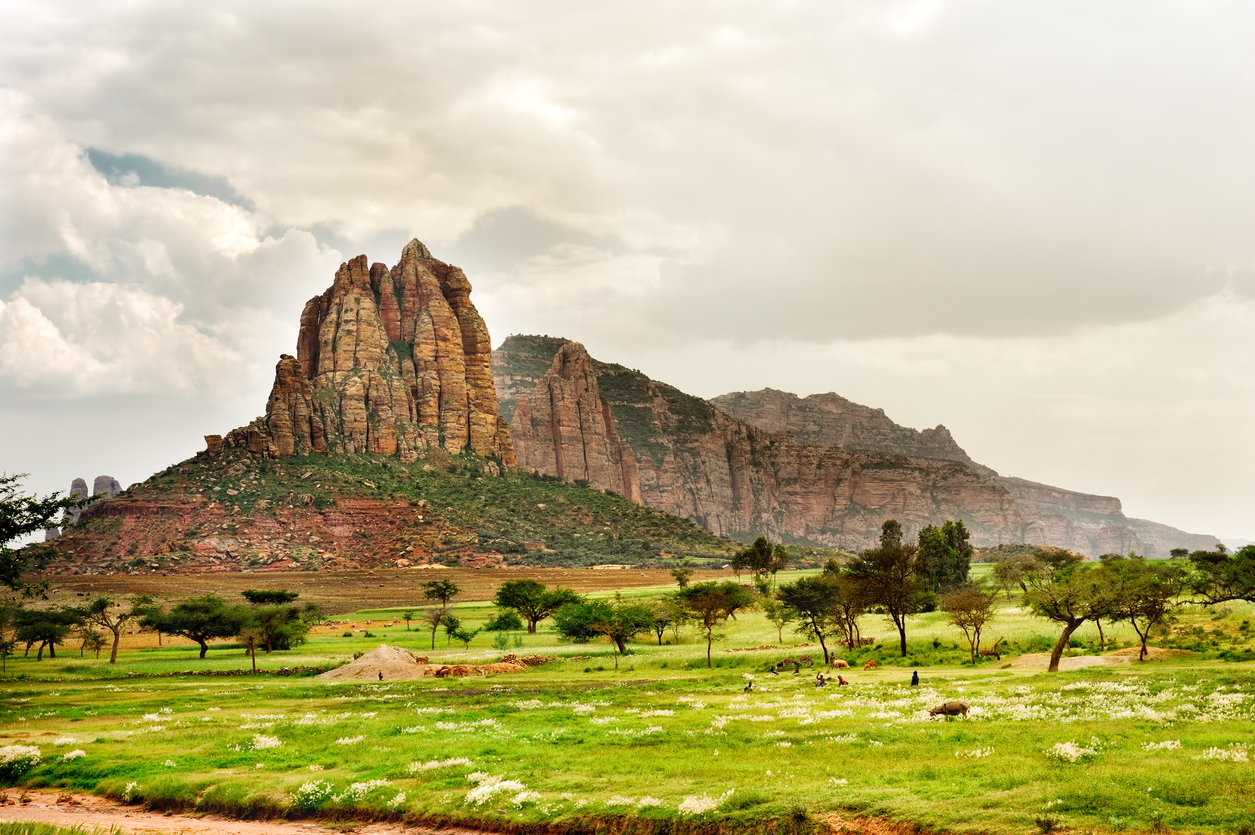
Ethiopia is a long way off the beaten track when it comes to adventure destinations. The country is basically untouched by tourists, despite all it has to offer in the way of landscape, history and culture. Plus it has some pretty extreme natural features: from volcanoes to salt flats.
This crazy geography lends itself very well to adventures. There is a lot of potential, but many activities will have to be do-it-yourself expeditions, as local providers simply don’t exist. For example, there is great white water rafting on the many rivers that traverse Ethiopia… but you’d have to bring your own boat. There’s a huge caving network in the limestone Sof Omar Caves and lots of potential for exploratory rock climbing. But again, you have to bring your own kit.
Here are our suggestions for four adventure locations in Ethiopia that don’t necessarily require specialist kit (or trying to fit a boat in your hand luggage):
1. Ethiopian Volcanoes
We need to talk about volcanoes. Unlike many African countries, Ethiopia is pretty mountainous and very volcanically active. The Great Rift Valley of Ethiopia is home to almost 60 volcanoes that are thought to have erupted in the last 10,000 years. Okay so that might sound like a long time to us, but it’s a geological blink of an eye.
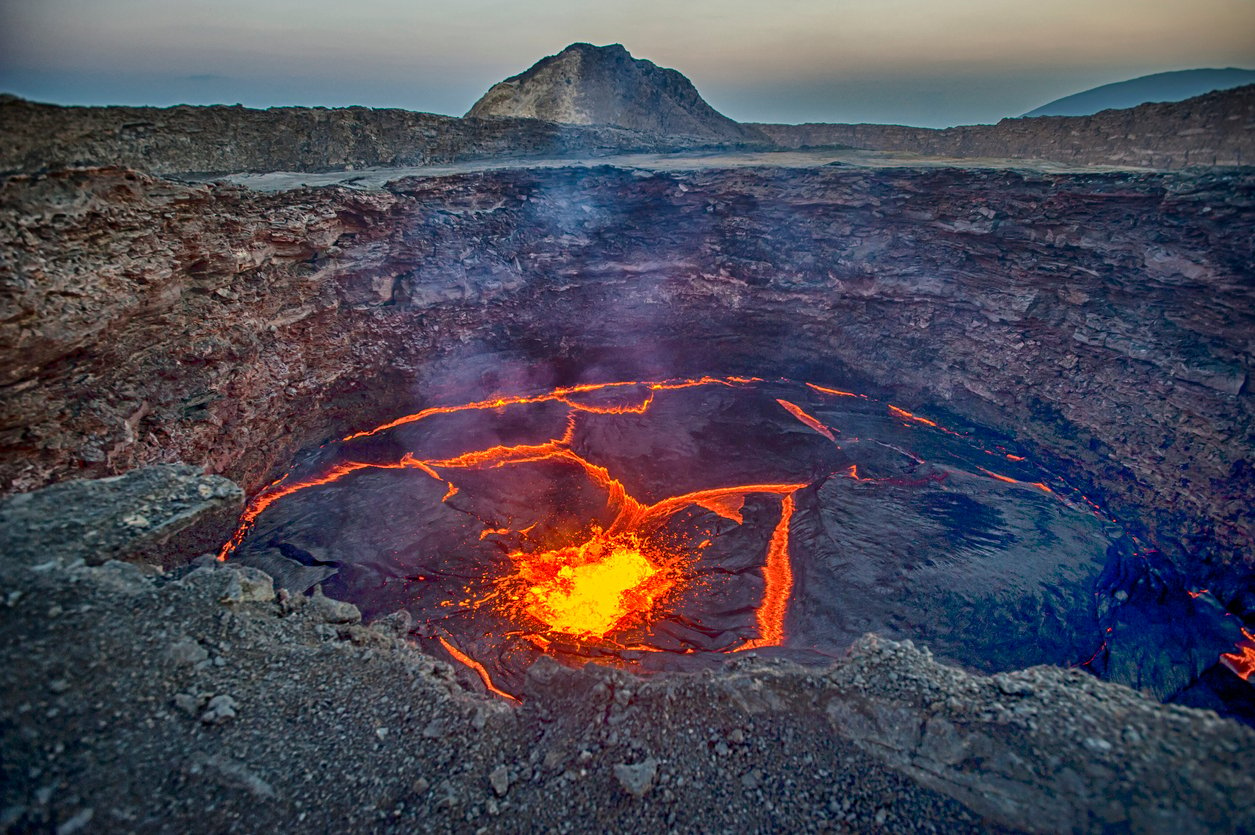
Some volcanoes in Ethiopia are definitely still active. Erta Ale is currently one of the most active volcanoes in the world. You can find it in the North East corner of Ethiopia, in the Afar Region. Erta Ale means “smoking mountain”, so you can guess it’s been active at least for living memory. The last eruptions were reported in 2008 and 2017. The southernmost pit of the mountain is known locally as “the gateway to Hell”. It is possible to climb the volcano and hike in the surrounding area.
2. Danakil Depression
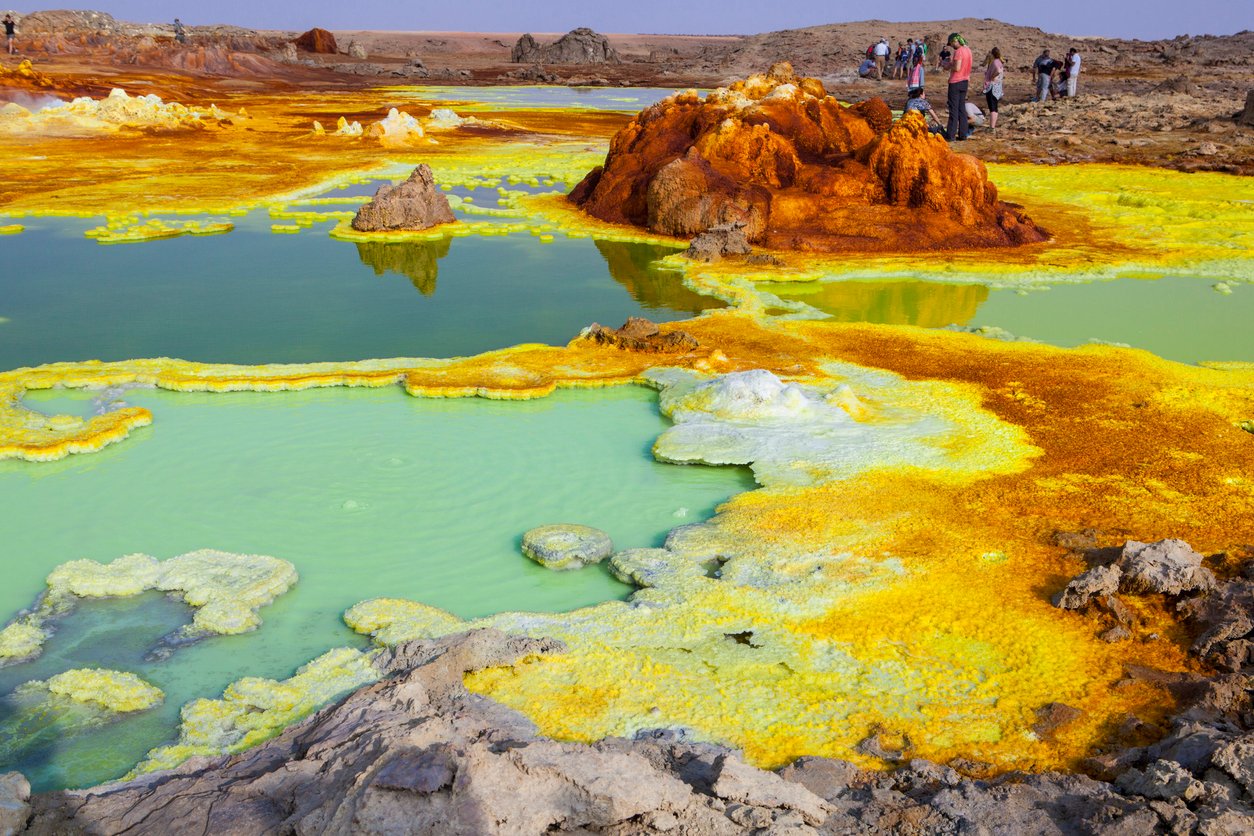
On the subject of volcanic activity, you couldn’t miss out Ethiopia’s Danakil Depression. It’s the lowest point in Africa (at 125 metres below sea level) and one of the hottest places on Earth, peaking at around 50°C. So yes, it means depression in the opposite-of-elevation sense, not that it’s a miserable place to go. Although you certainly wouldn’t want to live there. It’s made up of active volcanoes, sulphur hot springs and huge salt flats.
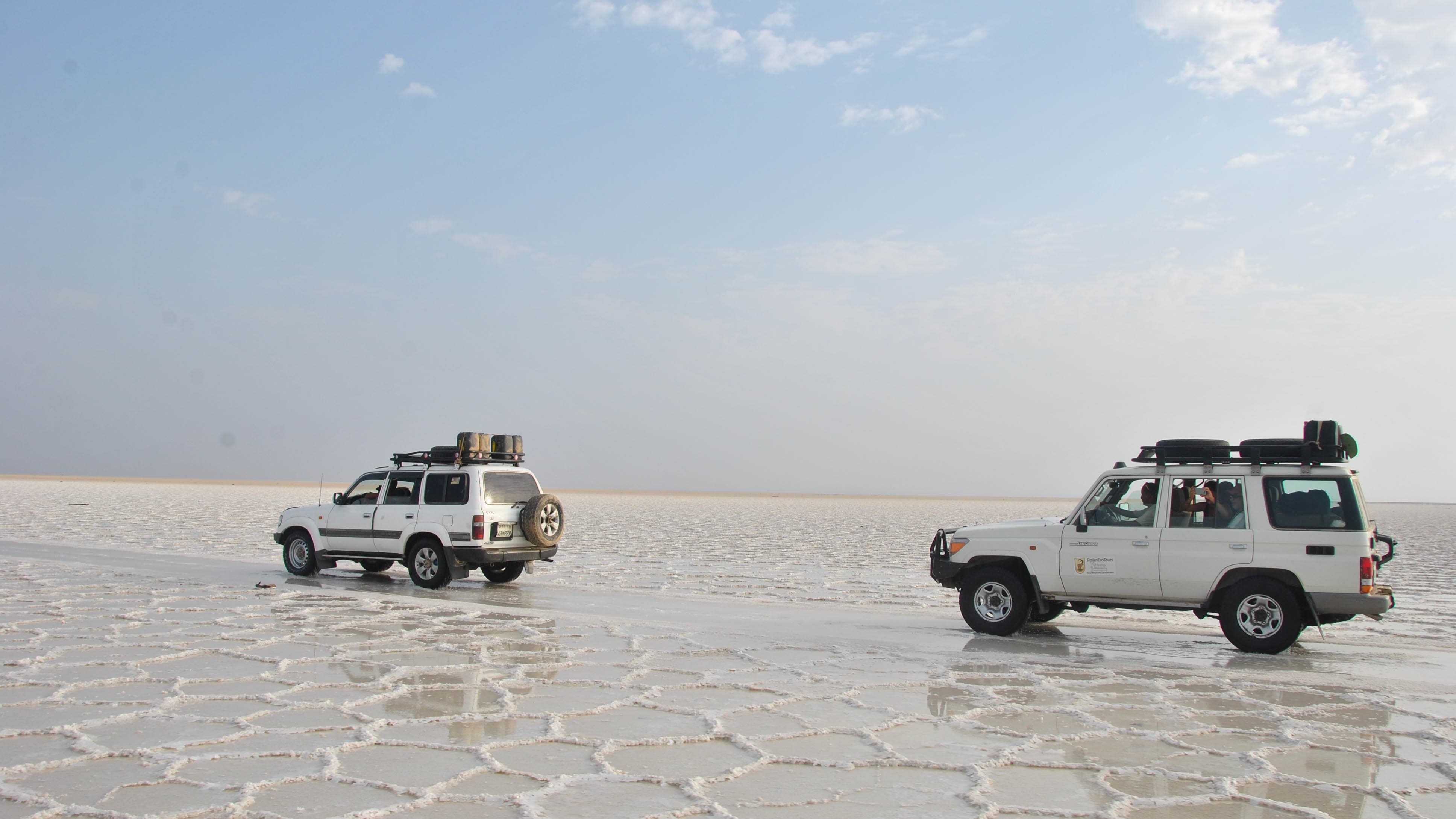
The salt flats of Ethiopia are the last remnants of a sea – once connected to the Red Sea but now almost completely evaporated. The nearby Asale Salt Lake has been mined for its rock salt for generations. This lake is fed by underground springs and the salt forms a solid crust on top that is split and cut into slabs by local workers. The blocks of salt are loaded onto camels and walked out of the Depression. Unfortunately the lake was contaminated with sulphuric acid in 2011 after a nearby volcano erupted, so the salt is no longer edible.
3. Highest Peak of Ethiopia – Ras Dashen
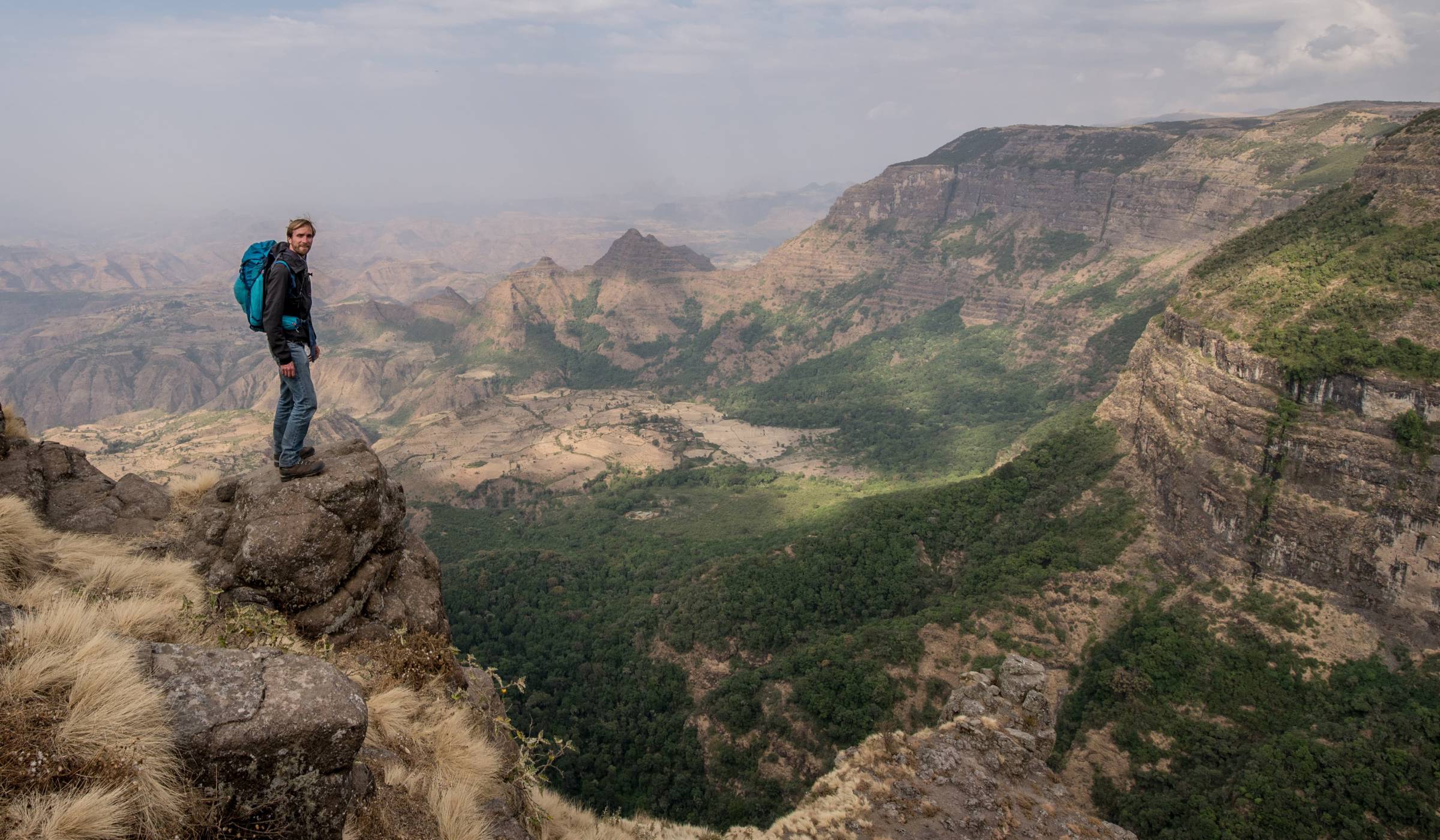
Fortunately, there are many mountains in Ethiopia which don’t erupt. The Simien Mountains to the north of the country are impressive for hiking and trekking. Within the range, the Simien National Park was made in 1969, to help protect its unique wildlife. The nearest city is Gondar – yes, that’s Gondar not Gondor – described as the Camelot of Africa.
The highest peak in Ethiopia is Ras Dashen. At 4550 metres above sea level, it can snow overnight on the summit but be melted within a few hours of the hot day. Ethiopia’s rainy season is in the summer, so it rarely snows on the summit in winter. But if it does, you can expect it to hang around. Trekking the Simien Mountains offers a wide range of hikes for all abilities. Whether that’s accessing remote and craggy peaks for a view across Africa, or hiking to ancient rock churches along age-old mountain tracks.
Like we mentioned before, there is some good rock climbing in the Simien Mountains and around Ethiopia, but you have to already know what you’re doing. UKC have a detailed, if a little dated, article about rock climbing in Ethiopia for more information.
4. Ethiopian Highlands
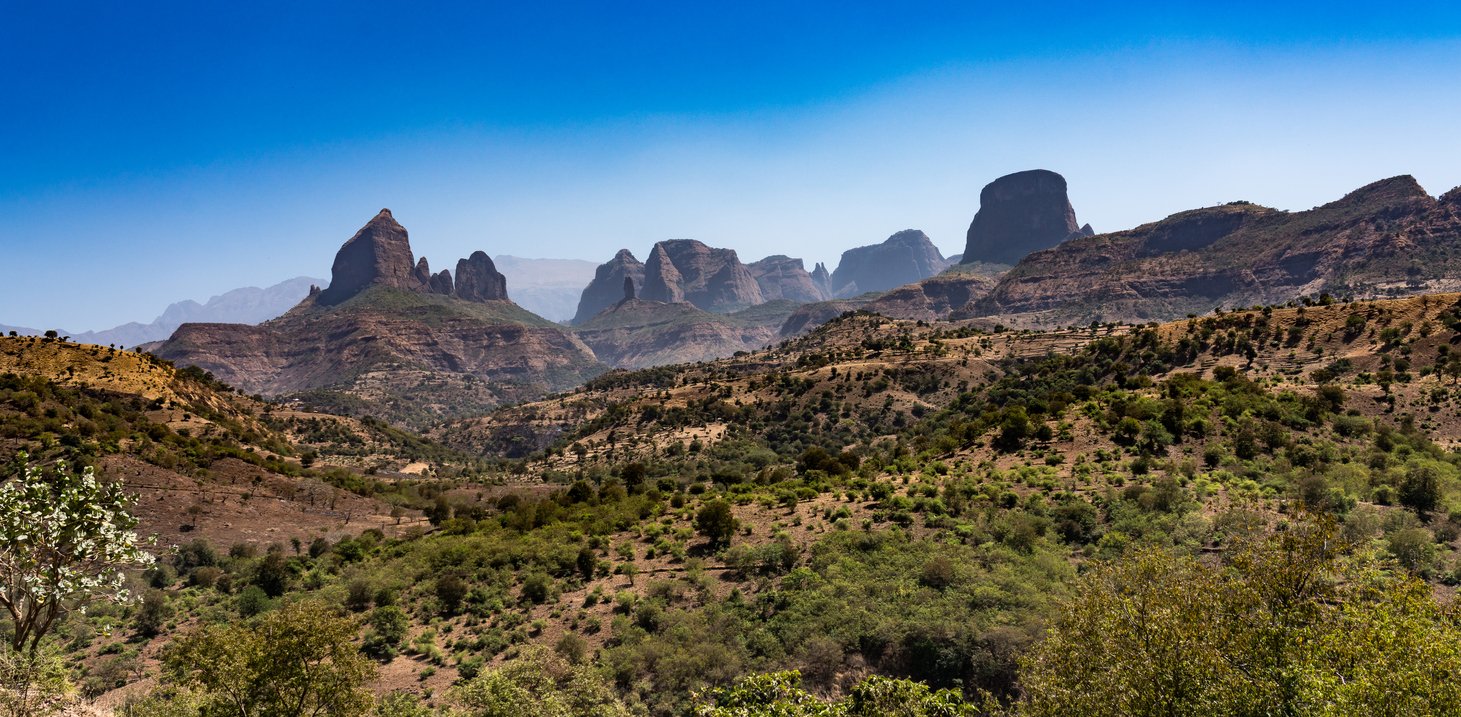
The Simien Mountains form part of the Ethiopian Highlands. Imagine the Scottish Highlands, but bigger, warmer and with fewer midges. Maybe the chance of a baboon. These highlands are poetically referred to as the Roof of Africa. Mount Kilimanjaro might have something to say about that, but they’re far enough apart not to quarrel over it.
The Bale Mountains are also a National Park within the Ethiopian Highlands and are nearly as high as the Simien Mountains. Someone had to win. But there are still 4000+ metre peaks in the Bale Mountians, like Mount Tullu Demtu. The area is also home to the Ethiopian Wolf which, unsurprisingly, only lives in Ethiopia. They look a bit like huge foxes and apparently only eat rodents – so don’t worry, you shouldn’t get bitten!
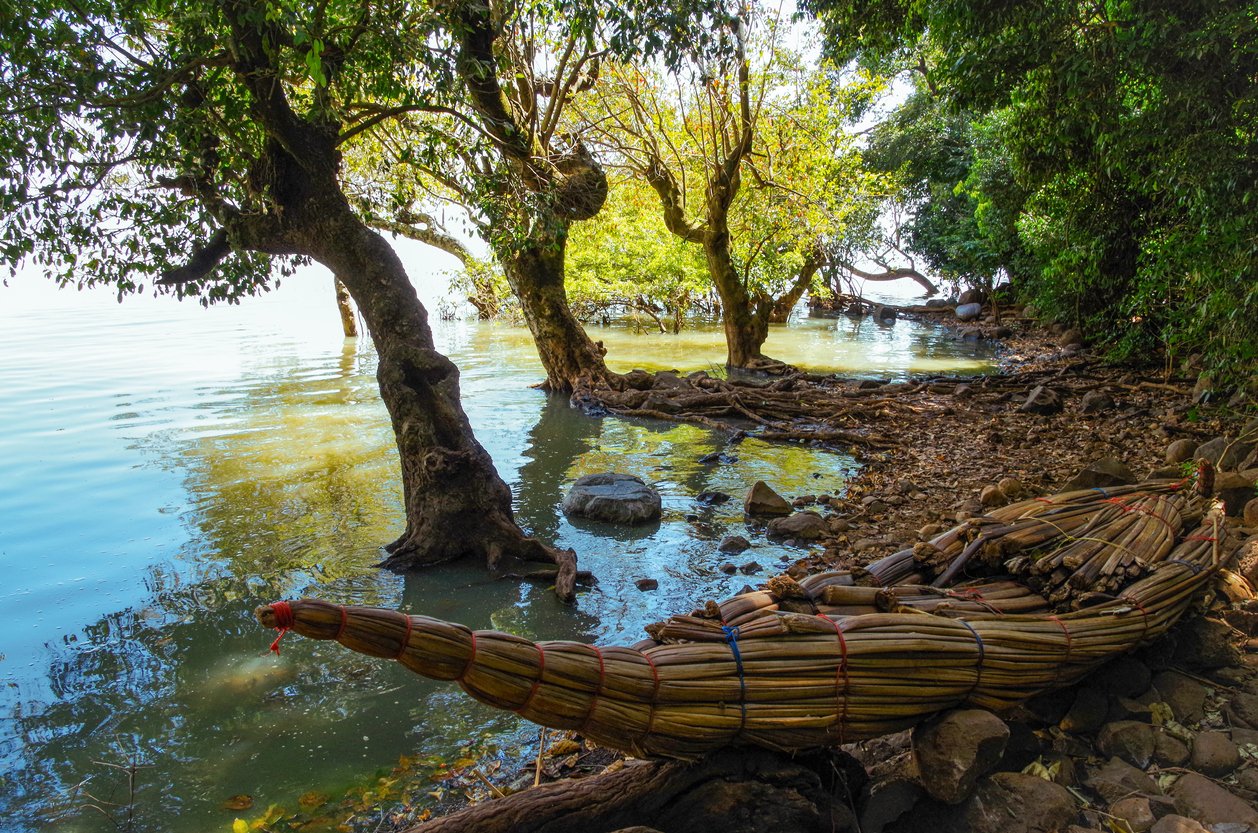
The largest lake in Ethiopia can be found in the highlands too. Lake Tana is the source of the Blue Nile (one of the two tributaries which join to form the Nile in Sudan and Egypt). There are 37 islands on Lake Tana, varying from teeny tiny to housing communities of monks.


